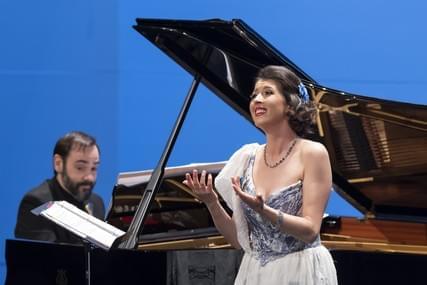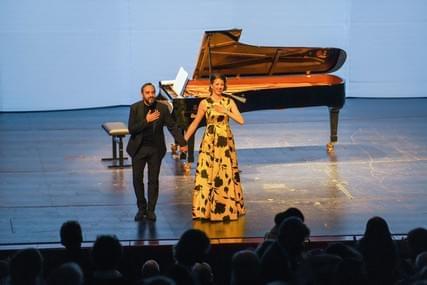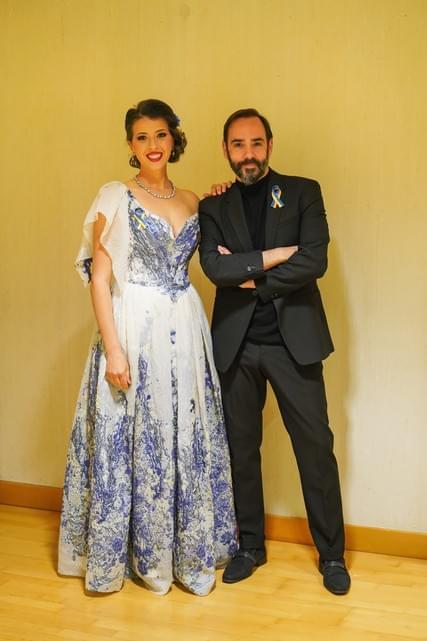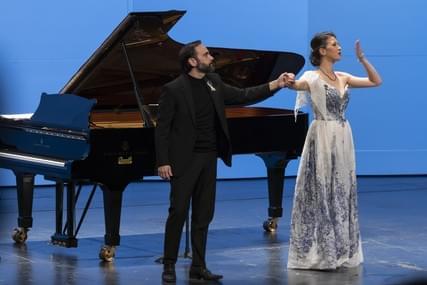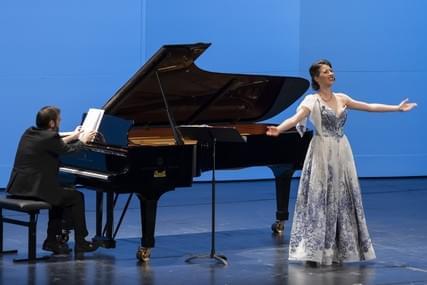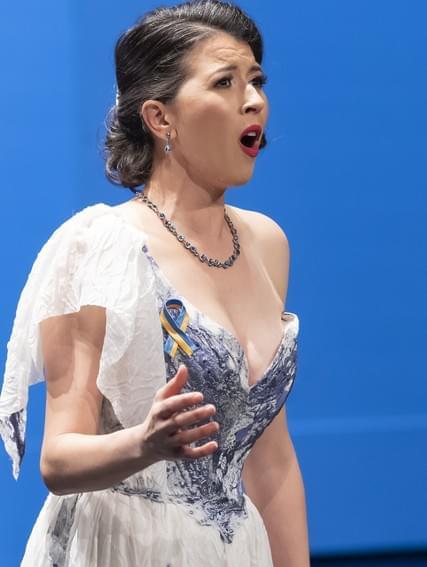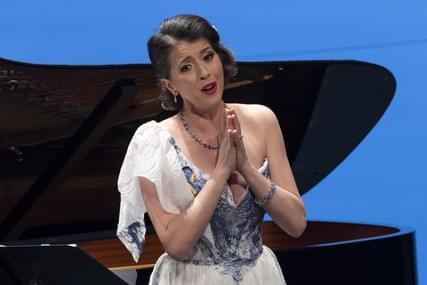Recital
Soloists
| Soprano | Lisette Oropesa | |
| Piano | Rubén Fernández Aguirre |
About
Lieder and songs of Saverio Mercadante, Franz Schubert, Robert Schumann, Gabriel Fauré, Francis Poulenc, Joaquin Rodrigo, Joaquin Nin, Manuel de Falla
Lisette Oropesa is one of the singing ladies of our time. Very few sopranos today manage to fill the scene and get the audience in their pockets during her first performance as she does. Spectacular voice, unquestionable technique, firmness in the high register, luminous timbre, astonishing ease for agility and a singing and on-stage elegance are the keys to the artist's success. Possessing a versatile voice that she manages intelligently, the singer from New Orleans and of Spanish origin makes the spectator vibrate with emotion, whether with an opera by Händel or Mozart, the Belcantist and Verdian heroines -among them Lucia and Traviata - or when she performs in recital the great songwriters, such as Schubert, Schumann, Fauré or Rodrigo
PROGRAM
SAVERIO MERCADANTE (1795-1870)
La stella
La primavera
FRANZ SCHUBERT (1797-1828)
Vedi quanto adoro ancora ingrato!
Suleika I
ROBERT SCHUMANN (1810-1856) (Aus 12 Gedichte nach Kerner, Op. 35)
Sehnsucht nach der Waldgegend
Stille Liebe
Frage
Stille Tränen
FRANCIS POULENC (1899-1963)
XV improvisation: Hommage à Édith Piaf
GABRIEL FAURÉ (1845-1924)
Clair de lune
Au bord de l'eau
Après un rêve
GEORGES BIZET (1838-1875)
Chanson d'avril
Chant d'amour
Adieu de l'hôtesse arabe
---------------------------------------------------------------------------
JOAQUIN RODRIGO (1901-1999) : Cuatro madrigales amatorios
i. Con qué la lavaré?
ii. Vos me matásteis
iii. De dónde venís, amore?
iv. De los álamos vengo, madre
MANUEL DE FALLA (1876-1946) : Siete canciones populares españolas
El paño moruno
Seguidilla murciana
Asturiana
Jota
Nana
Canción
Polo
EDUARDO FABINI (1882-1950)
ASTOR PIAZZOLLA (1921-1992)
Estudio arpegiado-Verano porteño
JOAQUIN NIN (1879-1949)
Montañesa
Tonada del Conde Sol
GONZALO ROIG (1890-1970) (Cecilia Valdés)
Entrada de Cecilia
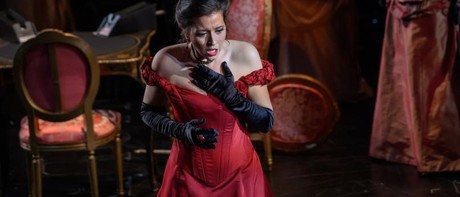
Interview - Levante Magazine
Lisette Oropesa is interviewed in Levante before her upcoming recital at Les Arts in Valencia

Interview - RTVE.es
Lisette speaks to RTVE.es about her upcoming performances in Spain

❄️ Lisette's Winter Newsletter!
Milan, Chicago, Valencia, Vienna, Madrid
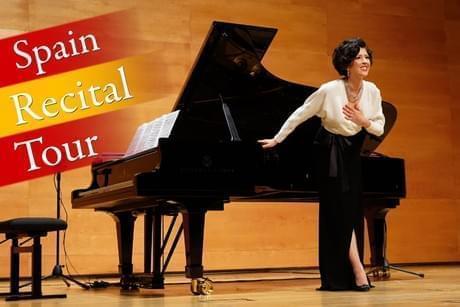
Spain Recital Tour
Lisette and Ruben bring their recital on the road throughout spain.
Reviews
De Mercadante a Lecuona, la exquisita Lisette Oropesa encandila en el Reina Sofía
El programa, amplio en ese abanico, fue además extraordinariamente generoso, tanto como la cercanía de la cantante. Oropesa no lo puede evitar. Es simpática y extrovertida, y necesita el contacto constante con el público. No importa si canta o no. Ella es pura comunicación permanente. Y generoso y grande también es su nivel interpretativo, ya que la soprano es dueña de un instrumento, y de unos conocimientos, propios de los mejores. Y por eso es un privilegio escucharla; porque cante lo que cante, lo hace con sabiduría, e imprimiendo un estilo que recuerda a épocas donde deslumbraron los grandes como De los Ángeles o Callas.The program, extensive in its variety, was additionally extraordinarily generous, as much as the singer's approachability. Oropesa can't help it. She is friendly and outgoing and needs constant contact with the audience. It doesn't matter if she sings or not. She is pure continuous communication. And generous and grand is also her interpretative level, since the soprano possesses an instrument and knowledge characteristic of the best. And that's why listening to her is a privilege; because whatever she sings, she does it with wisdom, and imprinting a style that reminds one of eras where greats like De los Ángeles or Callas dazzled.— Jacobo Ríos-Capapé Carpi • Valencia Plaza
Arrollador debut valenciano de Oropesa
La soprano se mostró pletórica de medios desde la primera de las piezas, La stella de Mercadante: la voz corría con facilidad por la sala y su atractivo timbre llenaba hasta cada rincón del teatro. En las piezas de Schubert y Schumann mostró el enorme interés que en ella despierta este repertorio, pues las interpretó sin partitura. Demuestra, pues, que ha trabajado mucho este repertorio y, aunque es una cantante fundamentalmente operística, se defiende en este ámbito sin problemas gracias a su innata musicalidad.The soprano exhibited a plethora of resources since the first of the pieces, Mercadante's La Stella: the voice effortlessly flowed through the hall, and its attractive tone filled every corner of the theater. In the pieces by Schubert and Schumann, she showed a vast interest in this repertoire, performing them without a score. This clearly displays that she has put a lot of work into this repertoire and, although she is primarily an opera singer, she can manage in this area effortlessly thanks to her innate musicality.— César RUS • Opera Actual
Brillante presentación de Lisette Oropesa en Les Arts
Recibida con una gran ovación y vítores variados, dio comienzo a su actuación con dos canciones de Severino Mercadante que cantó con gracia, pero con la voz aún algo fría, lo que se percibió ligeramente en un sobreagudo un poco tenso. Siguieron otras dos hiperestésicas y maravillosas canciones de Schubert, y a continuación vino Schumann, desde mi punto de vista lo mejor del recital. Contenido, emocionante y cantado con una gran expresividad, atrapó al público en una atmósfera de reflexión y trascendencia. Tres canciones de Fauré y otras tres de Bizet cerraban esta primera parte. La última de ellas contenía una cadenza bastante difícil y sin acompañamiento.Received with a resounding ovation and various cheers, she began her performance with two songs by Severino Mercadante which she sang gracefully, but with her voice still slightly cold, which was mildly noticeable in a somewhat tense high note. Next came two hyperesthetic and wonderful songs by Schubert, followed by Schumann, which in my opinion, was the highlight of the recital. Restrained, emotional, and sung with great expressivity, it captured the audience in an atmosphere of reflection and transcendence. Three songs by Fauré and another three by Bizet closed the first part. The last of them contained a rather difficult and unaccompanied cadenza.— Pedro Valbuena • Opera World



